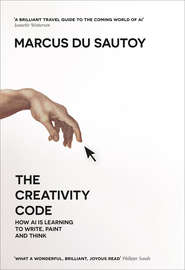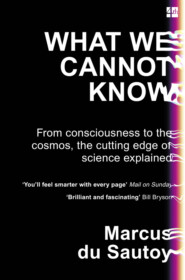По всем вопросам обращайтесь на: info@litportal.ru
(©) 2003-2024.
✖
The Music of the Primes: Why an unsolved problem in mathematics matters
Автор
Год написания книги
2019
Настройки чтения
Размер шрифта
Высота строк
Поля
This is a smaller number as it does not include all possible fractions found when x = 1. We are now adding only some of the fractions, and Euler knew that this time the smaller sum wouldn’t spiral off to infinity but would home in on some particular number. It had become quite a challenge by Euler’s day to identify a precise value for this infinite sum when x = 2. The best estimate was somewhere around
. In 1735, Euler wrote that ‘So much work has been done on the series that it seems hardly likely that anything new about them may still turn up … I, too, in spite of repeated effort, could achieve nothing more than approximate values for their sums.’
Nevertheless, Euler, emboldened by his previous discoveries, began to play around with this infinite sum. Twisting it this way and that like the sides of a Rubik’s cube, he suddenly found the series transformed. Like the colours on the cube, these numbers slowly came together to form a completely different pattern from the one he had started with. As he went on to describe, ‘Now, however, quite unexpectedly, I have found an elegant formula depending upon the quadrature of the circle’ – in modern parlance, a formula depending on the number π = 3.1415 …
By some pretty reckless analysis, Euler had discovered that this infinite sum was homing in on the square of π divided by 6:
The decimal expansion of
, like that of π, is completely chaotic and unpredictable. To this day, Euler’s discovery of this order lurking in the number
ranks as one of the most intriguing calculations in all of mathematics, and it took the scientific community of Euler’s time by storm. No one had predicted a link between the innocent sum
and the chaotic number π.
This success inspired Euler to investigate the power of the zeta function further. He knew that if he fed the zeta function with any number bigger than 1, the result would be some finite number. After a few years of solitary study he managed to identify the output of the zeta function for every even number. But there was something rather unsatisfactory about the zeta function. Whenever Euler fed the formula for the zeta function with any number less than 1, it would always output infinity. For example, for x = −1 it yields the infinite sum 1 + 2 + 3 + 4 + … The function behaved well only for numbers bigger than 1.
Euler’s discovery of his expression for
in terms of simple fractions was the first sign that the zeta function might reveal unexpected links between seemingly disparate parts of the mathematical canon. The second strange connection that Euler discovered was with an even more unpredictable sequence of numbers.
Rewriting the Greek story of the primes
Prime numbers suddenly enter Euler’s story as he tried to put his rickety analysis of the expression for
on a sound mathematical footing. As he played with the infinite sums he recalled the Greek discovery that every number can be built from multiplying prime numbers together, and realised that there was an alternative way to write the zeta function. He spotted that every term in the harmonic series, for example
, could be dissected using the knowledge that every number is built from its prime building blocks. So he wrote
Instead of writing the harmonic series as an infinite addition of all the fractions, Euler could take just fractions built from single primes, like
, and multiply them together. His expression, known today as Euler’s product, connected the worlds of addition and multiplication. The zeta function appeared on one side of the new equation and the primes on the other. In one equation was encapsulated the fact that every number can be built by multiplying together prime numbers:
At first sight Euler’s product doesn’t look as if it will help us in our quest to understand prime numbers. After all, it’s just another way of expressing something the Greeks knew more than two thousand years ago. Indeed, Euler himself would not grasp the full significance of his rewriting of this property of the primes.
The significance of Euler’s product took another hundred years, and the insight of Dirichlet and Riemann, to be recognised. By turning this Greek gem and staring at it from a nineteenth-century perspective, there emerged a new mathematical horizon that the Greeks could never have imagined. In Berlin, Dirichlet was intrigued by the way Euler had used the zeta function to express an important property of prime numbers – one that the Greeks had proved two thousand years before. When Euler input the number 1 into the zeta function, the output
spiralled off to infinity. Euler saw that the output could spiral off to infinity only if there were infinitely many prime numbers. The key to this realisation was Euler’s product, which connected the zeta function and the primes. Although the Greeks had proved centuries before that there were infinitely many primes, Euler’s novel proof incorporated concepts completely different to those used by Euclid.
Вы ознакомились с фрагментом книги.
Приобретайте полный текст книги у нашего партнера:
Приобретайте полный текст книги у нашего партнера:








